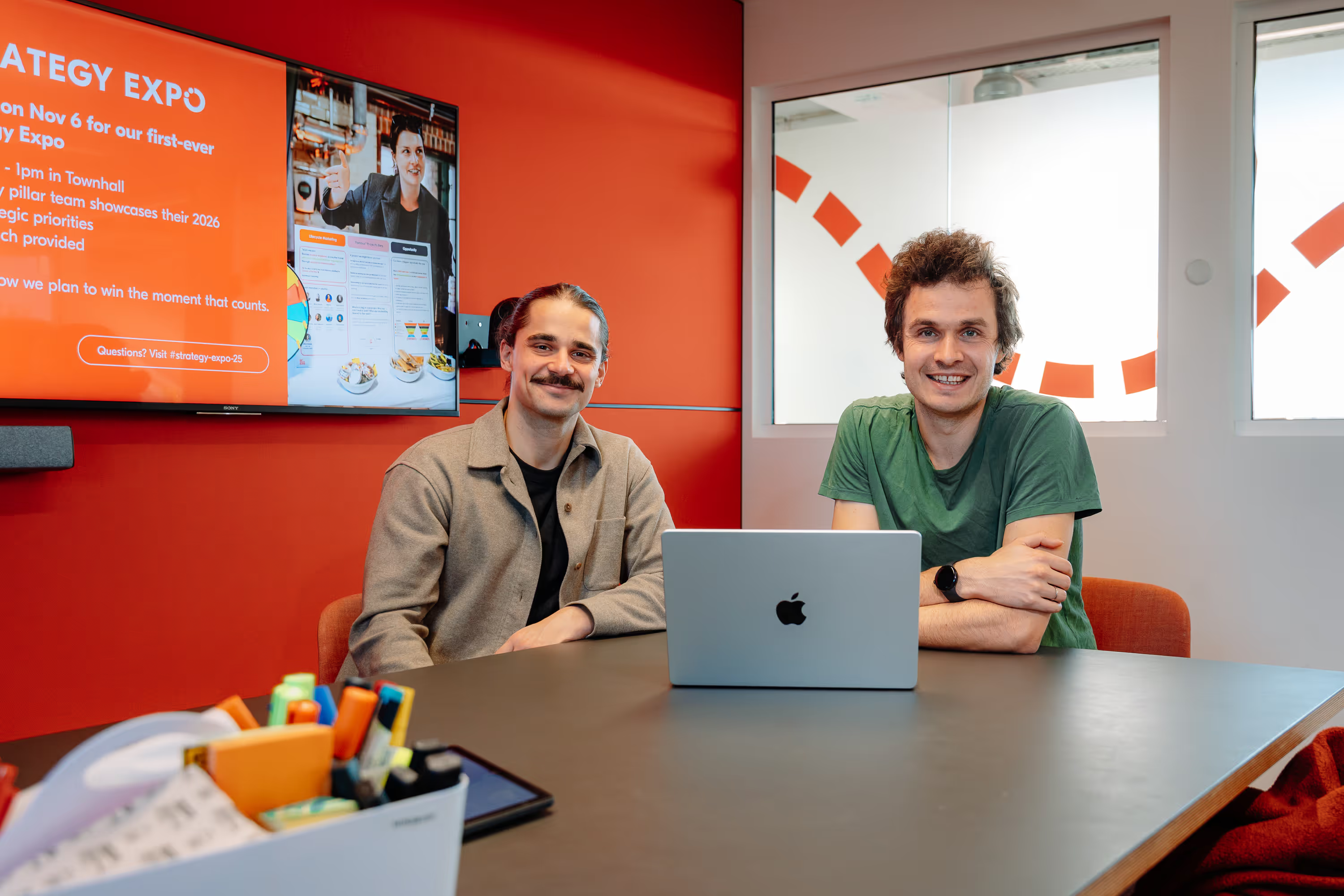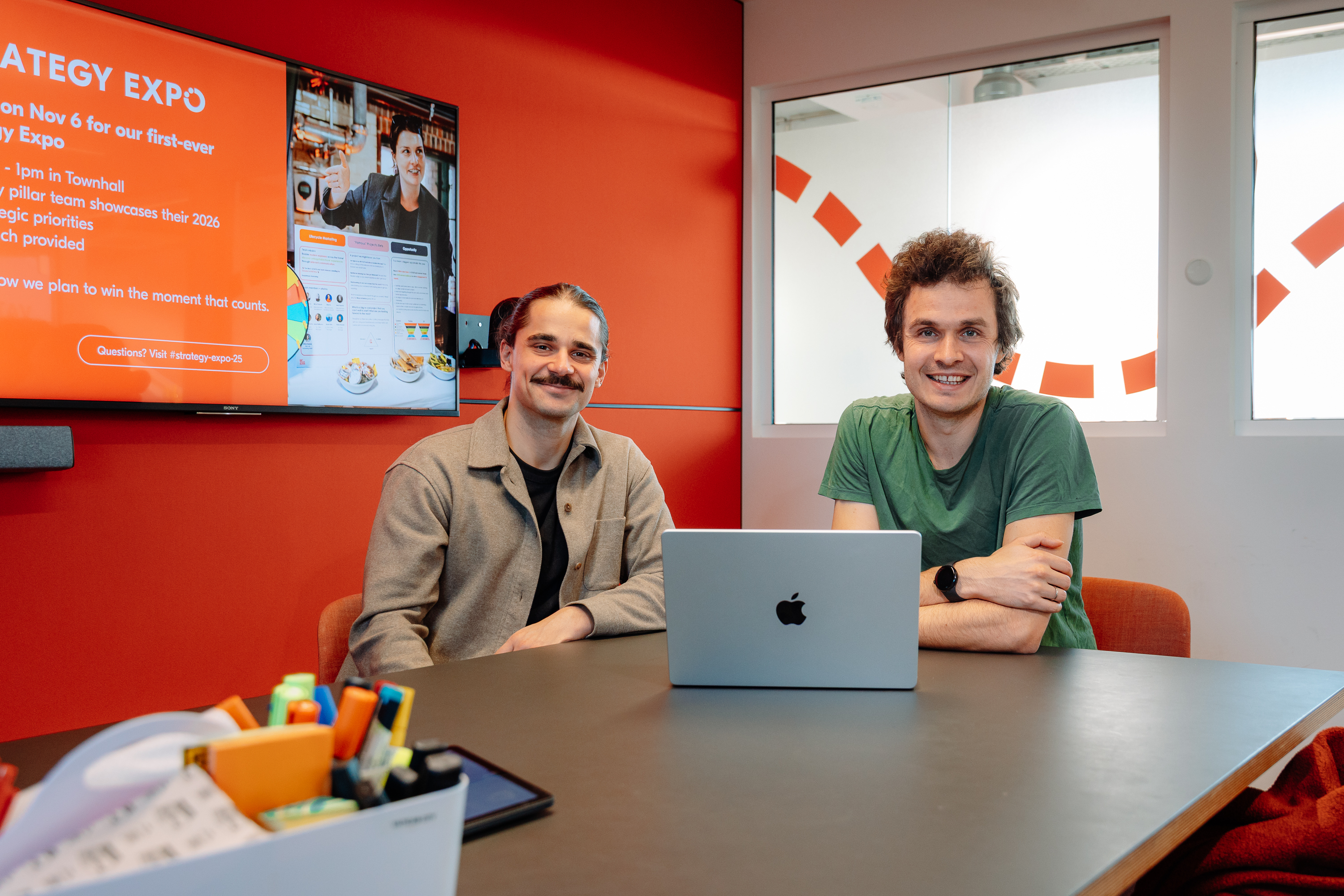Building ‘Patient Impatience’ in the Supplier Connectivity Team
In order to maintain the best possible talent density at GetYourGuide, we combine engineers of diverse backgrounds and a mix of different levels of seniority.

Key takeaways:
Giacomo Palma is an Engineering Manager on GetYourGuide’s Supplier Connectivity team. He discusses what sets the company apart, and how colleagues deliver impact to modern explorers.
{{divider}}
In order to maintain the best possible talent density at GetYourGuide, we combine engineers of diverse backgrounds and a mix of different levels of seniority. In this way, we create the perfect combination: an ever-improving cloud of creativity focused on the company’s mission through prioritizing personal and professional growth.
If you asked team members what makes them passionate about engineering, most would reply with different stories that often have something in common. Many engineers describe their first experience with coding as a feeling of profound discovery, and the revelation that through code it was possible to create something that didn’t exist before. They wanted to build a product, something they needed, a job to be done.
It’s no coincidence that the most talented engineers are those who maintain that spark of creativity. Throughout their careers, they have honed this quality by following their curiosity, and the need to create. Alongside, they have increased their technical skills and maintained the urgency of building software that brings value.
Nourishing and empowering this sense of urgency is a priority for our engineering teams at GetYourGuide. As engineering managers, it’s our job to keep it in its best shape and make it the foundation of our company culture.
I stand by my long-held vision of the engineer role: if you don’t believe it's a profoundly creative job, you’re just doing it wrong. The initial rush of satisfaction that derives from creating that first line of code is good to start but not enough. To grow in a company with an ambitious mission like GetYourGuide it's important to keep the motivation and the results high. It takes talent and the constant maintenance of this productive mindset where passion and technique flow together.
A combination of need, planning, know-how, and risk-taking characterizes the approach of GetYourGuide’s Supplier Connectivity team and is something I call patient impatience. Here’s how we do it.
#1 Dance in the Zone of Proximal Development
I spoke with many engineers of different seniority levels and asked them what makes a team, task, or company not just good, but great. Their response was overwhelming. I have opportunities to learn a lot.
Demonstrating the importance of learning at GetYourGuide, there is a dedicated budget for engineers to learn new skills. Growth is also fostered by a mentality that encourages and enables them to work on areas where they can maximize their potential for learning.
As an Engineering Manager, I enable team members to expand their knowledge by supporting them to stay in the zone of proximal development. This area defines all the tasks and initiatives that are right out of our comfort zone, allowing us to learn without exposing us to the anxiety zone.

By applying patient impatience and working in the zone of proximal development, challenges we now consider impossible to achieve move from the anxiety zone to our comfort zone.
#2 The Right Job for the Person
We’ve all heard the expression “the right person for the job.” Fortunately, I’m not the only one who believes the term doesn’t quite apply to working in a fast-growing company, where the staff is highly talented and ambitious.
The Engineering Manager’s role isn’t to have the team complete sprint after sprint. Rather, the role is to lead staff towards achieving career progression and ensuring they’re engaged with meaningful problems that will help them unlock their full potential.
As long as we can all agree that a team shouldn’t create silos of information and has a healthy “bus factor” – that is, the number of team members that would have to leave a project to put its execution at risk – there is no need to squeeze engineers’ efforts into areas of development that are not fulfilling their ambitions.
Engineers working in the Supplier Connectivity team are required to have a variety of hard and soft skills. This is due to the large amount of ownership that goes from the architectural design of our Supplier API to the building of tools and features to enable partners to integrate with GetYourGuide. We’ve learned to encourage engineers to expand their knowledge in all directions, follow their interests, and direct these interests towards one single purpose – getting the job done.
To ensure engineers keep their sense of patient impatience and stay engaged with our shared challenges, colleagues are free to use and grow their skills in the direction that will fulfill them. Self-actualization can be reached only when the interest is to find the right job to allow a person to grow – and not the other way around.
#3 Know When to Act, Know When to Plan
When the responsibilities of a staff member grow, things can get more chaotic. The number of requests increases, their complexity intensifies, and so does the impact those requests will have in the short, medium, and long term.
Thanks to patient impatience, an engineer knows when to act, when to plan, and also when to ignore all the requests being directed their way. Whether tasks are piling up in their email inbox or the current roadmap, an engineer does this by controlling the flow through a simple framework: the Eisenhower Matrix.
The only two parameters controlling the Eisenhower Matrix are urgency and importance. The urgency represents if and how the job is related to time, and if its effectiveness is altered (and by how much) were it to be completed at another time. The importance is the quantification of the impact of a job, or how much the completion of this operation would change a metric from X to Y. Balancing out the combination of those two is key for keeping a state of patient impatience.

Urgent and Important
There shouldn’t be much to explain here, the job is in the top corner of the chart. Just drop everything and go for it.
Important but Not Urgent
There’s no doubt this job has to be completed for the product and for personal growth, but as the time component isn’t predominant, this can be planned accordingly.
Not Important but Urgent
If a job is urgent but not so important as to register on colleagues’ radar, it’s not the right job for that person. Rather, it should be delegated to someone for whom this task is important.
Not Important and Not Urgent
There’s no need to invest any time in this task: ignore it. It won’t bring any good to you or the product.
#4 Look at the Full Picture, Front and Back
Many classic team management books underline the benefit of keeping engineering teams distant from the noise of stakeholders and product decisions. The books profusely explain how this would inevitably distract engineers from what’s important: completing tasks.
It will come as no surprise to learn that I consider this approach wrong, at best.
We all have in mind the picture of the room of NASA engineers exploding with joy as soon as the voice announces the launch has been completed successfully. I don’t doubt they would be professional enough to do the same great job even if they weren’t sitting in the room with their eyes on the big screen at the moment of the launch. But I’m also sure they wouldn’t be as happy if they found out from a monthly report that the result of their hard work has been appreciated.
In the Supplier Connectivity team, having all the information is considered fundamental. Our efforts and decisions make a difference in how much travelers enjoy their vacations, and we wouldn’t be at the same level of ‘good’ if we didn’t have the full picture. We train our engineers to be able to consume and read all the data and information behind the initiatives and roadmap. We believe that we can only be fully involved and motivated by knowing our real impact.
The urgency that moves our patient impatience is fueled by the prospect of how great our achievements can be, and rewarded by the impact we have on real people. That initiative keeps us busy for days with complex algorithmic challenges to solve. It influences the next experience we can offer our modern explorers. It allows a supplier to sell out their tours. It will be the job and memory of a tour guide. For all of these reasons, for GetYourGuide’s Supplier Connectivity team, our work is never merely a task.
#5 Done is Better than Perfect
If having full access to the information and data is the best way to make fully informed decisions, there's the risk of getting stuck in analysis paralysis.
Analysis paralysis is when overanalyzing data causes the inability to move forward with actions for fear of not having all the information needed to make the best decision or avoid mistakes.
In the Supplier Connectivity team, it’s my job to stop the team from falling into the swamp of analysis paralysis. I do this by encouraging an environment where it’s important to take action, where errors are machines for learning, and where done is better than perfect. We want to achieve freedom where we don’t feel like having to squeeze numbers until they tell us what we want to hear, but where we reach our conclusion through a healthy mix of information and experimentation.
Prioritizing personal growth; celebrating diverse ambitions and creativity; giving tools for decision making and measuring impact, and encouraging an urgency for getting things done is how we foster a sense of patient impatience in the Supplier Connectivity team. This is how we’re able to deliver incredible experiences to modern explorers.
For updates on our open positions, check out our Career page.


.jpg)




